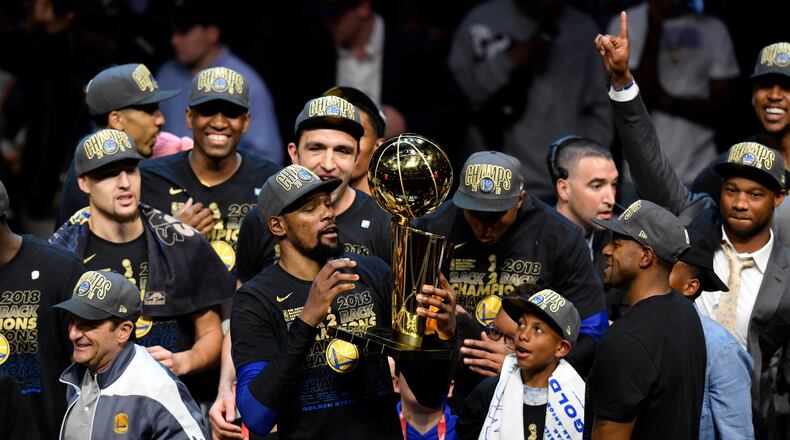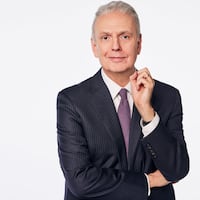It says something about the NBA, and surely nothing good, that its most fascinating month is July, when no actual games are played. (We won't count those summer scrimmages out West, where a mild scuffle between Hawks rookie Trae Young and the egregious Grayson Allen passes for "news.") If you track pro hoops, you already know all need to know until … well, next July.
July 2010: LeBron James makes "The Decision"; Miami reaches the next four NBA finals, winning two.
July 2014: LeBron announces via Sports Illustrated that he's returning to Cleveland; Cavaliers reach the next four NBA finals, winning once.
July 2016: Golden State, having been undone in Games 5, 6 and 7 by LeBron's Cavs, meets with Kevin Durant in the Hamptons. The league's second-best player signs with a team that just went 73-9. The Warriors win the next two titles without much fuss.
The past eight finals have matched LeBron against somebody. The past four have matched his team against Golden State. A 30-team league can be boiled down to two that matter – the Warriors and whichever franchise has LeBron. In the grand scheme, this is not a good thing. This is a thing that’s the opposite of good.
Many clever organizations are endeavoring to reach that exalted podium, from the analytics-obsessed Rockets to the Process-driven 76ers to the old-money Celtics, but none has done it yet. Even with its (soft) salary cap and free agency, the NBA in 2018 looks much as it did 55 years ago, when there were nine teams – including the Syracuse Nationals, the Chicago Zephyrs, the Cincinnati Royals and the St. Louis Hawks – with no cap and no free agency, and all that mattered was when Bill Russell’s Celtics faced Wilt Chamberlain or the Lakers.
There were star-spangled teams before LeBron joined Dwyane Wade and Chris Bosh. Wilt was traded to the Lakers of Elgin Baylor and Jerry West in 1968, though the club never won a title until Baylor retired. The aging Oscar Robertson moved from Cincinnati to Milwaukee to pair with the young Kareem Abdul-Jabbar and the younger Bob Dandridge, one championship ensuing. But “The Decision” brought with a new paradigm: Clustering in pursuit of a crown wasn’t just acceptable; it was the absolute way to go.
The eight years since have seen teams beg players – everybody who’s any good lives for that July 1 when he becomes a free agent – to come grace their operation. A couple of years ago, we spoke of “max contracts.” There’s now such a thing as a “supermax” contract, which the NBA instituted in the attempt to get big names to stay put. Russell Westbrook signed one last fall, sticking with Oklahoma City at a time when the world expected him to bolt. The NBA, see, knows it has a problem.
Durant-to-Golden-State set an awful precedent. Commissioner Adam Silver admitted on ESPN Radio last month: "The 28 other teams, they're the biggest complainers that these two teams have met four times in a row (in the finals) … A team that was already a championship team gained Kevin Durant."
Well, yeah. League apologists, assuming there are any, might note that the Summer of KD coincided with a one-time cap spike, enabling those clever Warriors – remember when owner Joe Lacob told the New York Times his franchise was "light years ahead"? – to cram a league MVP into a roster including two-time MVP Stephen Curry, finals MVP Andre Iguodala and All-Stars Klay Thompson and Draymond Green.
Silver and Co. were surely relieved when Decision 3.0 saw LeBron opt for the Lakers – not exactly a small-market team – as opposed to the 65-win Rockets or (shudder) the Warriors themselves. Which isn’t to say the Light Years Ahead crew was twiddling corporate thumbs.
The team that had everything but a real center landed DeMarcus Cousins, who’s a real center and who, as of two seasons ago, was among the league’s 10 best players. There are asterisks aplenty – the contract is modest ($5.3 million) and runs one season; Cousins is coming off a torn Achilles and mightn’t be ready until January; the man known as Boogie bears more baggage that a Delta carousel – but the upshot was another round of shock and awe. Golden State, having won three titles in four years, now has the capability of deploying FIVE All-Stars in tandem. Good for Golden State. Bad for 29 other clubs. Awful for the NBA.
Baseball hasn’t hit its All-Star break, but we already know who the 2019 NBA champion will be – the same team that took the 2015, 2017 and 2018 titles. The only change is that the Warriors won’t face LeBron in the finals. Golden State playing by the rules, but those rules have allowed the difference in conferences to become laughable and one team to remain, er, light years ahead. There’s nothing to see here, folks, nothing until next July.
About the Author
Keep Reading
The Latest
Featured


